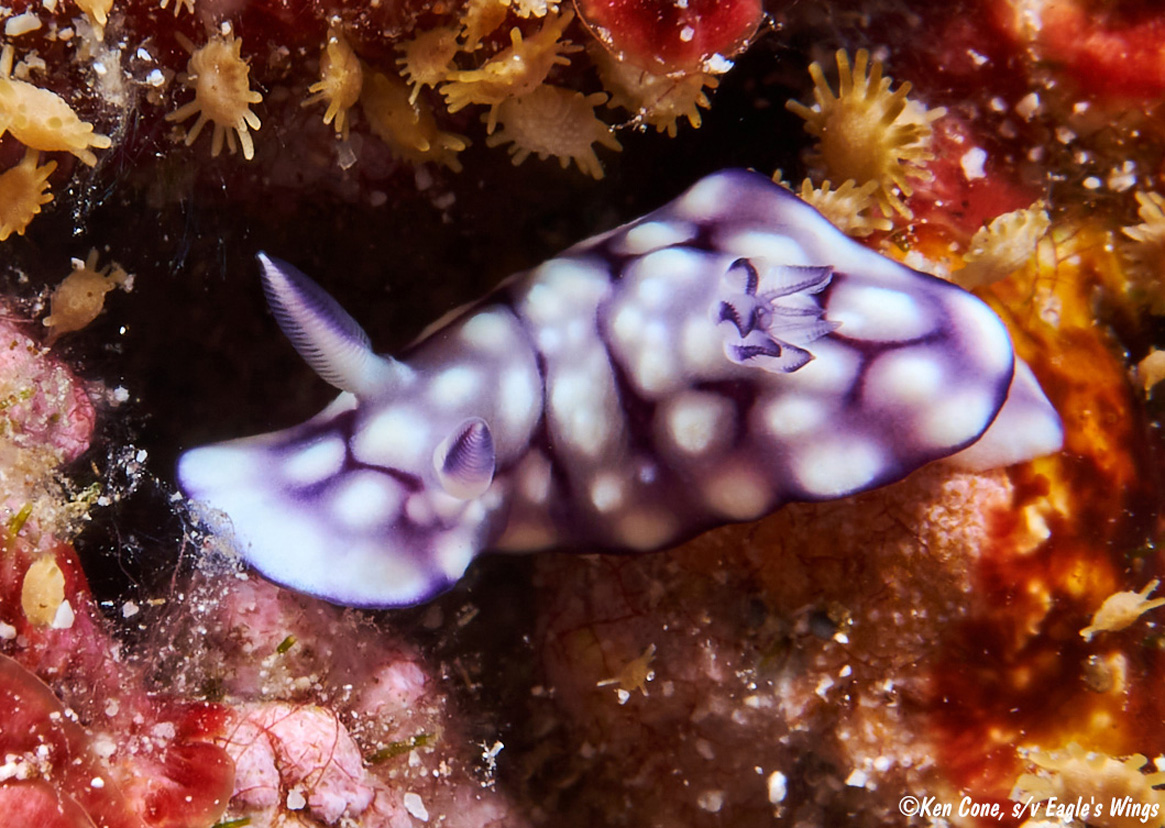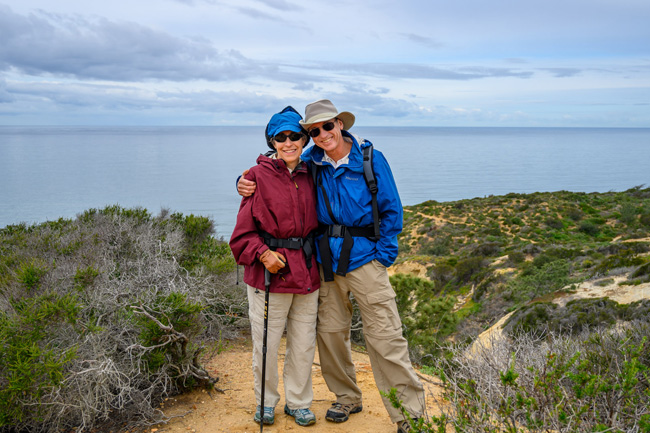 |
Goniobranchus sp.
Image courtesy of Ken Cone and Beth Van ZummerenMajuro Atoll, Marshall Islands
Goniobranchus sp. (undescribed)
I sure hate to imply that COVID has been good for anything, but it has led to some pretty interesting nudibranch finds! Travel restrictions caused by the pandemic have kept some cruising vessels stuck at Majuro Atoll. If they leave the Marshalls, they cannot return until the restrictions are lifted, and similar restrictions or quarantines at other destinations make it more reasonable to stay put. Besides, the Marshalls so far are, I believe, still free of the virus entirely and a good place to safely hide out.
So what can you do at Majuro for excitement? Why, look for slugs, of course! Regular watchers of this site will have seen several Majuro BOWs by John and Lynette Flynn of s/v White Hawk. But we are also getting excellent photos and observations from Ken Cone and Beth Van Zummeren of s/v Eagle's Wings, including the undescribed species of Goniobranchus figured here.
This animal, figured as Goniobranchus sp. 11 in the second edition of Nudibranch and Sea Slug Identification, is so far known only from the Marshall Islands and until recently from just the three specimens it took me more than 30 years to find at Kwajalein. Ken and Beth have found and photographed six of them in 1 - 2m of water in the lagoon of Majuro Atoll over the last few months, five of which are figured in this BOW. The top photo taken in May shows the nudibranch crawling among spiked foraminifera. There were also two juveniles in July, (only one figured) a pair in September and one with deformed rhinophores fused at the base in August. Either Majuro is currently undergoing a bit of a population bloom of this rare species or Ken and Beth have zeroed in on a habitat where it has been hiding out from us until now.
Superficially, Goniobranchus sp. 11 resembles G. geometricus (also found in Majuro) and to a lesser degree G. conchyliatus and G. vibratus. It can easily be differentiated from the first two by the color of the rhinophores and gills. In G. geometricus, the gills and rhinophores are tipped with a more or less solid green or orange-yellow and in G. conchyliatus they are distinctly orange to red. In G. sp. 11, the rhinophores are mostly white with a purple band running up the anterior and posterior edges. The gills are also white with dark purple edges. The mostly Hawaiian G. vibratus has gills similar to G. sp. 11, but the upper halves of the rhinophores are solid dark purple-black and the body between the pustules is bright yellow. Goniobranchus sp. 11, G. vibratus and G. conchyliatus share the trait, unusual but not unheard of in species of this genus, of continually wiggling their gills, a feature not seen in G. geometricus. The gill wiggle is shown in a short youtube video clip of two individuals from Kwajalein.
Thanks to Beth and Ken for their sharp eyes and photo skills. The more we see, the more we learn. I understand this interesting species is currently under study, so hopefully in the not-too-distant future we will know more about it, and maybe even be able to put a name to it.
Santa Barbara, Calif
Oct., 2021
Send Scott email at uwkwaj@yahoo.com
Scott is also the Webmaster of Marshall Island Sea Slugs
Ken and Beth at Torrey Pines State Park
San Diego, Calif
 | As of 2021, we are on the 17th year of our 3-year trip on board our sailboat "Eagle's Wings." After setting off from the Chicago area in 2004, we soon found ourselves hooked on cruising and nixed the 3-year plan. For many years we sailed between New Zealand (our "home away from home") and the South Pacific tropical islands. We have been serious about underwater photography since 2012. Since late 2019, we have been marooned in the Marshall Islands, due to Covid. Last year our friends John and Lynette of "White Hawk" introduced us to the amazing world of shallow water nudibranch diving. We love being able to take our time and spend long hours hunting, observing, and photographing the strange and exotic creatures that live under rocks in 1-2 meters of water. And at that depth, a tank of air can last more than three hours. Ken uses a Nikon Z7 in a Nauticam housing, 60mm macro Nikon lens, CMC-1 wet lens, two Sea&Sea YS-D1 Strobes, and one Sola Video 2500F light. Beth scouts using a 3-power magnifying glass from Underwater-MagnifyingGlass.com and we both use the Dive Alert Buddy Watcher system to signal the other person when we spot something interesting.
Send Ken and Beth email at sailingvessel.eagleswings@gmail.com
|
